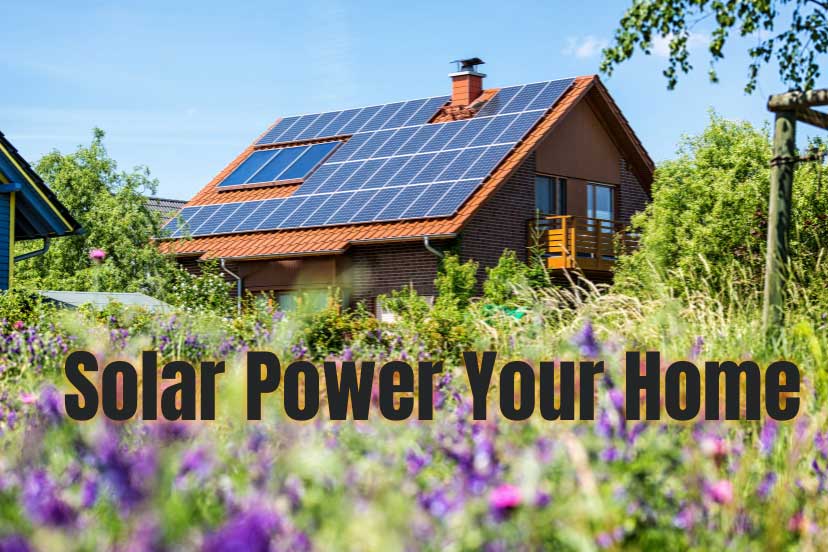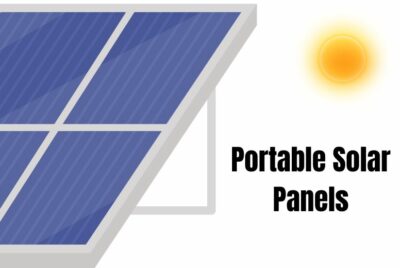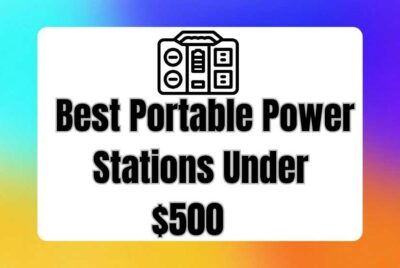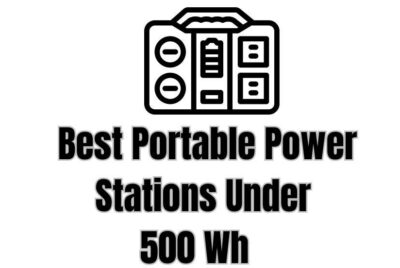Solar Generators for Homes: Power Your Way to Energy Independence
I may earn a commission for purchases made through my links. It helps me run this site. Check out my disclosure for more details.
In this article I’m thrilled to discuss the possibilities and limitations of using solar generators for homes, as a main power and also a backup power source. So I’ll guide you through the process of determining the size of a solar generator you will need to power your home appliance and devices.
But first…
Understanding Solar Generators
Before we explore the sizing considerations, let’s clarify what a solar generator actually is. Unlike traditional fuel-powered generators, solar generators rely on photovoltaic panels to convert sunlight into electricity.
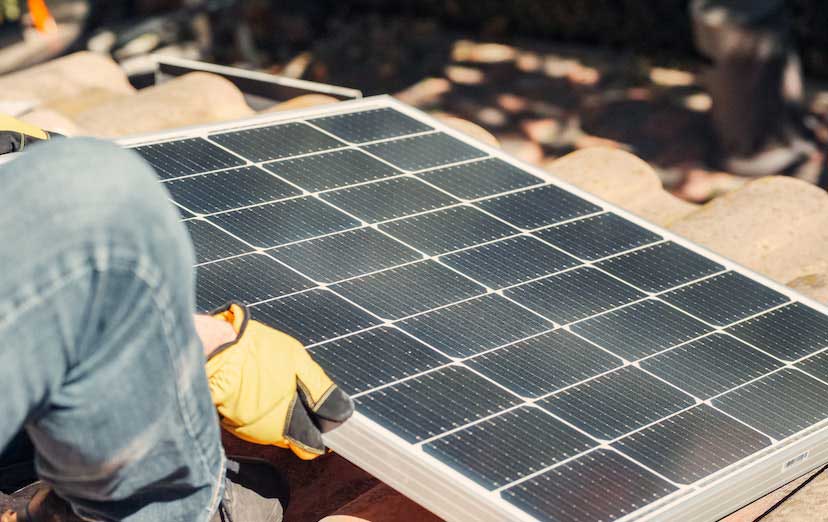
This electricity is stored in batteries for later use or can be directly utilized to power appliances and devices in your home.
Assessing Your Homes Power Needs From A Solar Generator
To determine the right size of solar generator needed for your home, it’s crucial to assess your power needs accurately. Start by calculating your average power consumption by determining the energy consumed by essential appliances and electronics.
Make a list of the devices you would like to power during an outage and take note of their power requirements. Additionally, take into account the typical duration of power outages in your area.
Selecting the Right Size
The size of a solar generator primarily depends on its power capacity, which is measured in watt-hours (Wh) or kilowatt-hours (kWh). Choosing the right size is essential to ensure your generator can meet your power requirements adequately.
By assessing your power needs, you can estimate the capacity needed to support your essential devices.
Portable vs. Stationary Generators
Solar generators are designed to be portable. Portable generators offer the advantage of mobility, allowing you to take them on camping trips or other outdoor activities. On the other hand, the larger the wattage of the solar generators they heavier it is, some can weigh over 70 pounds.
Whilst they still can be moved, you wouldn’t want to do it every day! Large capacity solar generators certainly have more power and they can provide a seamless backup power solution.
Thought about These?
Several factors should be taken into account when selecting a solar generator. Firstly, consider the type and capacity of the battery within the generator, as it determines the stored energy available for use.
Secondly, pay attention to the efficiency and wattage of the solar panels, as they directly impact the generator’s ability to harness sunlight. Lastly, evaluate the weight, size, and portability of the generator, ensuring it fits your space and mobility requirements.
Installation and Maintenance
When it comes to installation, solar generators are relatively straightforward to set up, especially portable models. However, for grid-tied systems, it’s essential to consult a professional to ensure proper integration with your existing electrical system.
Also, regular maintenance is necessary to maximize the lifespan and efficiency of your solar generator. Clean the panels regularly, inspect the battery connections, and follow the manufacturer’s guidelines for optimal performance.
Cost Considerations
Investing in a solar generator is a long-term decision that requires upfront investment. The cost varies depending on the generator’s size, battery capacity, and additional features. You can pay a few hundred dollars for a 500w unit and over $5000 for a 3000w unit.
While the initial investment may seem substantial, it’s crucial to consider the potential long-term savings on energy bills and the positive environmental impact.
Furthermore, be aware of any available incentives, rebates, or tax credits in your region that can help offset the cost.
Environmental Benefits
One of the most significant advantages of solar generators is their positive impact on the environment. By utilizing clean and renewable solar energy, these generators contribute to reducing carbon emissions.
By choosing solar power over traditional fuel-powered alternatives, you are actively participating in the transition towards a greener and more sustainable future.
FAQ 1: How long can a solar generator power my home during an outage?
The duration a solar generator can power your home during an outage depends on several factors, including the generator’s capacity, the energy consumption of your devices, and the amount of sunlight available for recharging. A larger capacity generator with efficient solar panels can provide power for several hours or even days, depending on your energy usage.
FAQ 2: Can I connect a solar generator to my existing electrical system?
Yes, it’s possible to connect a solar generator to your existing electrical system, especially if you opt for a stationary grid-tied system. By doing so, you can rely on solar power to supplement your energy needs and potentially reduce your reliance on the grid. Consult a professional electrician to ensure safe and proper integration.
FAQ 3: What happens to excess solar energy generated by the system?
In many regions, excess solar power produced by the system is retransmitted to the grid through a process called net metering. This allows you either to obtain credit or payment for the surplus electricity you produce, further maximizing the benefits of your solar generator.
FAQ 4: Are solar generators suitable for areas with less sunlight?
While solar generators perform optimally in areas with abundant sunlight, they can still be viable in areas with less sunlight. It’s important to consider the efficiency of solar panels and battery capacity when choosing a solar generator. Additionally, consulting with a solar energy expert can help you determine the feasibility of solar power in your specific location.
You can phone up companies in your area and get some free information with reference to the amount of solar panels you would need, and a recommended solar generator size that can comfortably power everything you need in your home.
FAQ 5: Can I expand my homes solar generator system in the future?
Yes, the scalability of solar generator systems allows for future expansion. If you anticipate increasing your energy needs or want to explore additional solar power applications, such as powering an electric vehicle or adding more appliances, there are systems that can be easily expanded as needed.
Year-Round Solar Efficiency and Power Output
Solar efficiency refers to the ability of solar panels to convert sunlight into electricity. It is typically represented as a percentage. Solar generators with higher efficiency can harness more energy from the available sunlight, resulting in increased power output.
However, it’s important to consider that solar efficiency can vary throughout the year due to factors such as sunlight intensity, cloud cover, and the angle and orientation of solar panels. Generally, solar generators tend to be more efficient during the summer months when sunlight is abundant.
Determining Power Output Requirements for Home Appliances
To properly assess the size of solar generators needed to power various home appliances, it’s important to understand the power consumption of these devices. The table below provides an estimate of the power requirements for common household appliances:
| Appliance | Power Consumption (Watts) |
|---|---|
| Refrigerator (medium) | 150-400 |
| Air Conditioner (window) | 500-1,500 |
| Television (LED/LCD) | 50-200 |
| Laptop | 50-100 |
| Washing Machine | 300-500 |
| Dishwasher | 1,200-2,400 |
| Microwave Oven | 800-1,200 |
| Electric Stove | 1,200-3,500 |
| Ceiling Fan | 10-75 |
| Lights (LED bulbs) | 5-20 |
Note that these power consumption estimates can vary based on specific models and usage patterns. It’s advisable to refer to the manufacturer’s specifications or use a power meter to obtain accurate readings for your appliances.
Choosing the Right Size of Solar Generator For Your Home
When selecting a solar generator, it’s crucial to consider its power output or capacity. To power appliances during an outage, a solar generator should have a power capacity higher than the total power consumption of the devices you intend to run simultaneously.
For this discussion, we will focus on solar generators with a minimum power capacity of 3,000 watt-hours (Wh). These models can handle a range of appliances and provide a reasonable backup power solution.
It’s important to note that the power output of solar generators can be affected by several factors, including solar panel efficiency, battery capacity, and weather conditions. While solar generators have the ability to recharge using sunlight, their power output may vary throughout the year.
Geographical Variations in Solar Power Output
Solar power output can vary across different geographical regions due to variations in sunlight availability. To provide a more detailed analysis, let’s break down the United States into four sections: Northeast, Midwest, South, and West. The table below demonstrates the estimated power output (in watt-hours) per day for a 3,000 Wh solar generator in each region:
| Geographical Region | Estimated Daily Power Output (Wh) |
|---|---|
| Northeast | 2,000-2,500 |
| Midwest | 2,500-3,000 |
| South | 3,000-3,500 |
| West | 3,500-4,000 |
Keep in mind that these estimates are general and based on average sunlight conditions. The actual power output can be influenced by factors such as seasonality, cloud cover, and shading from nearby structures.
Device Run Times per Generator Size
To provide a clearer understanding of device run times per generator size in each geographical region, the table below presents an estimated range of run times (in hours) for various appliances using solar generators with a 3,000 Wh capacity:
| Appliance | Northeast | Midwest | South | West |
|---|---|---|---|---|
| Refrigerator (medium) | 5-20 | 4-16 | 4-13 | 3-10 |
| Air Conditioner (window) | Not Recommended | Not Recommended | Not Recommended | Not Recommended |
| Television (LED/LCD) | 15-60 | 12-48 | 10-40 | 8-32 |
| Laptop | 30-120 | 24-96 | 20-80 | 16-64 |
| Washing Machine | Not Recommended | Not Recommended | Not Recommended | Not Recommended |
| Dishwasher | Not Recommended | Not Recommended | Not Recommended | Not Recommended |
| Microwave Oven | 6-24 | 5-20 | 4-16 | 3-12 |
| Electric Stove | Not Recommended | Not Recommended | Not Recommended | Not Recommended |
| Ceiling Fan | 50-200 | 40-160 | 33-133 | 27-107 |
| Lights (LED bulbs) | 150-600 | 120-480 | 100-400 | 80-320 |
It’s important to note that running high-power appliances such as air conditioners, washing machines, dishwashers, and electric stoves with solar generators of this size may not be feasible or sustainable. These appliances typically require significantly more power than what a 3,000 Wh generator can provide. Consider alternative solutions or higher-capacity 6,000 solar generators for such devices.
In an ideal world you would chain 2 x 6,000 Wh generators together if you wanted to run air con units solely on solar. You will need a lot of solar panels if you want to recharge them as whole house air con units will drain your solar batteries as fast as ice melts in a steaming hot day. You are looking at at least a $20k set up right there.
Anyway, by analyzing the power consumption of your appliances, considering geographical variations, and referring to these tables, you can make informed decisions about the size of the solar generator needed to power your home appliances during an outage, and also to provide alternative or supplementary power.
Remember to look at the particular models product specifications and seek professional install advice for hooking it to the grid.
The Take Home
With the information provided in this article, you can confidently navigate the world of solar generators and make informed decisions about the size and type of generator that best suits your home. Embrace solar energy, and enjoy the benefits of a reliable and sustainable power source.
Solar generators offer an efficient, reliable, and eco-friendly solution for powering homes. By accurately assessing your power needs, selecting the right size, and considering temperature variables, you can find a solar generator that perfectly suits your requirements. Embrace the benefits of solar energy and take a step towards energy independence and a cleaner environment.

